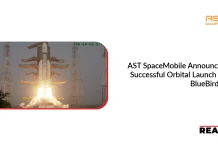Velo3D, a leading provider of additive manufacturing technology for mission-critical metal components, announced a $6 million contract to develop and qualify copper nickel alloy (CuNi) for use across its line of Sapphire printers, including the large-format Sapphire XC Laser Powder-Bed Fusion (LPBF) system. The program is part of the U.S. Navy Maritime Industrial Base Program’s initiative to accelerate ship repair and strengthen supply chain resilience.
Widely used in naval applications, CuNi is valued for its outstanding resistance to seawater corrosion. However, producing CuNi parts through traditional casting methods presents significant challenges—often requiring extensive rework, which drives up costs and extends lead times. By leveraging its Rapid Production Solution (RPS), Velo3D can streamline development and deliver CuNi parts significantly faster than conventional casting, supporting both shipbuilding schedules and long-term naval readiness.
“Velo3D is proud to be the first U.S.-based OEM with domestically developed Laser Powder-Bed Fusion additive manufacturing solutions to develop CuNi for its systems,” said Arun Jeldi, Velo3D CEO. “Through our Rapid Production Solution, we are helping provide faster part delivery, enhanced reliability, and the surge capacity needed to meet evolving defense demands.”
Also Read: RTX’s Raytheon signs MOU with Diehl Defence for Stinger missile co-production
The CuNi qualification is being carried out at Velo3D’s development center in Fremont, California, in partnership with a U.S.-based, openly sourced metal powder supplier, ensuring greater independence and security within the Navy’s supply chain.
All Sapphire printers are assembled in the United States, with the Sapphire XC capable of printing parts up to 600 mm in diameter and 550 mm in height. Once qualified, the Sapphire XC could become the first printer of its size to produce CuNi parts, enabling larger, more complex naval components while delivering the benefits of LPBF technology, including high-fidelity printing and industry-leading in-situ process monitoring.




